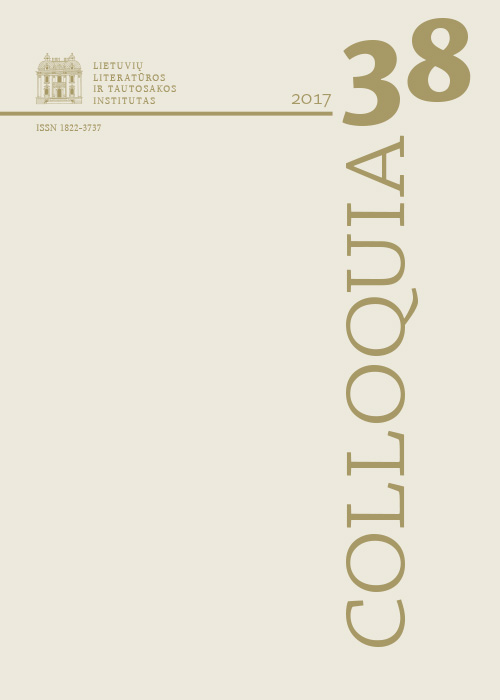Komparatyvistikos (ne)įmanomybė: Juozas Tumas-Vaižgantas ir Miguelis de Unamuno
Santrauka
Straipsnyje lyginamos ispanų rašytojo Miguelio de Unamuno ir lietuvio Juozo Tumo-Vaižganto kūrybos visumos, parodant, kad tiesiogiai nesusiję tekstai ir autoriai gali būti gretinami, o toks lyginimas padeda išryškinti atskirų nacionalinių literatūrų bendrybes. Ieškant tinkamiausios prieigos tokios rūšies lyginamajai analizei, iš pradžių aptariamos esminės lyginamosios literatūros (komparatyvistikos) prielaidos. Pastebima, kad lyginamieji tyrimai gali būti klasifikuojami pagal dėmesį, skiriamą vienai iš trijų sampratų: nacionalinė literatūra, visuotinė literatūra ir literatūra apskritai. Ryškinant nacionalinės literatūros konceptą, dažniausiai tiriami tiesioginiai kelių tautinių literatūrų ryšiai; visuotinės literatūros samprata nukreipia į tarptautinio kanono tyrimus; kalbant apie literatūrą apskritai, steigiamas požiūris, kad skirtingose terpėse ir kontekstuose esama bendrų literatūros raidos tendencijų, tad remiamasi viršnacionaline literatūros traktuote. Pastaruoju atveju aktuali komparatyvistinė tematologija, siūlanti ieškoti tekstus siejančių archetipinių temų bei jų variacijų. Aptarus lietuvių ir ispanų literatūrų istorinius bei teminius ryšius, prieinama prie išvados, kad parankiausias požiūris lyginimui – būtent literatūros apskritai samprata, leidžianti parodyti, jog įmanu gretinti tiesiogiai nesusijusius, bet giluminių teminių saitų vienijamus tekstus. Šia perspektyva ir grindžiama tematologinė Vaižganto ir Unamuno kūrybos analizė.
Atsisiuntimai
Skaitomiausi šio autoriaus(ų) straipsniai
- Aistė Kučinskienė, Viktorija Šeina, Saulius Vasiliauskas, Du sovietinio kanono autoriai posovietinėje Lietuvos mokykloje: Petras Cvirka ir Salomėja Nėris , Colloquia: T 53 (2024): Colloquia
- Aistė Kučinskienė, Literatūrologai ir visuomenė: tarp marginalizacijos ir elitiškumo , Colloquia: T 50 (2022): Colloquia
- Aistė Kučinskienė, Viktorija Šeina, Gitana Vanagaitė, Pratarmė , Colloquia: T 53 (2024): Colloquia
- Aistė Kučinskienė, Jūratė Sprindytė, Virginija Cibarauskė, Jūratė Čerškutė, Rima Bertašavičiūtė, Apie doktorantūros studijas, laisvalaikį ir akademines erdves , Colloquia: T 33 (2014)
- Aistė Kučinskienė, Apie Birutę, komparatyvistiką, vertimą ir viltį , Colloquia: T 46 (2021)
